New Nikon SB-900 Speedlight Flash and SD-9 Battery Pack
Nikon didn’t stop with the D700 today. Also announced was the new flagship Speedlight SB-900. The new big boy in the Creative Lighting System, this i-TTL flash brings a number of improvements over the Nikon SB-800 Speedlight it will supplant at the top.
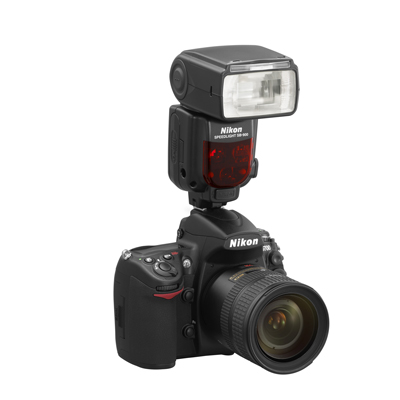
The SB-900 is designed to work better with Nikon’s current mixed-format system of FX and DX cameras. With FX bodies, the standard flash zoom coverage extends from 17mm to 200mm, with a flip down diffuser covering 14mm, and even wider focal lengths in DX mode.
A new feature is a selectable light distribution pattern. Center weighted mode illuminates the center portion of the frame more but allows falloff towards the edges. Standard mode illuminates in a style similar to the SB-800, and Even mode focuses on trying to equalize illumination across the frame for group shots or similar situations. This is going to be a highly useful option for those trying to create specific lighting effects, and may reduce setup time by eliminating the need for certain light modifiers.
The SB-900 does away with the 5th battery external compartment that the SB-800 featured, yet manages to improve recycle times 25% with only 4 batteries compared to the SB-800 with 5. Nikon is claiming a 2.3 second full power recycle time with 4 NiMH AA rechargeable batteries, 4 seconds with alkalines, and with the optional SD-9 battery pack, recycle times can drop to one second.
The user interface is completely revised, with a rotary dial for settings changes plus the on/off switch now includes settings for wireless master and remote on the switch itself, removing these key features from the menus.
It can also automatically detect Nikon’s new set of color gels and communicate the information to the D3 or D700 so the camera’s Auto White Balance can take it into account.
Finally, when using the speedlight at high speed, like all other modern flash units it will cut out at high temperatures to avoid damaging the flash- it now features a temperature gauge to show when you are approaching the thermal cutoff limit.
Firmware updates can now be downloaded to the camera via the camera’s memory card. The AF assist beam is optimized to cover the D3, D700, and D300′s 51 point grid from 20-105mm. Swivel and tilt now cover 90º through -11º tilt, and 180 degree swivel left and right.
In addition to the SD-9 battery pack, Nikon’s press release also mentions optional ‘weather guards’ that will protect the connection between the flash and certain cameras (most likely the D3, D700 and D300) in wet conditions.
Nikon estimates the selling price of the SB-900 to be $499.95, a fair bit steeper than the SB-800 at present (courtesy of more features and weaker dollars, probably), but closer in price to the Canon high end 580EXII, which has dropped in price since release. It will include the speedlight stand, bounce adapter, color filter holder, intelligent color filter kit, diffuser dome and soft case. The SD-9 is estimated to come in at $230. Release will be in August.
PC-E Micro Nikkor 45mm f2.8D ED and PC-E Micro NIKKOR 85mm f2.8D Lenses
Finally, Nikon announced a pair of new lenses today, the PC-E Micro-Nikkor 45mm f/2.8D ED and the PC-E Micro-Nikkor 85mm f/2.8D.
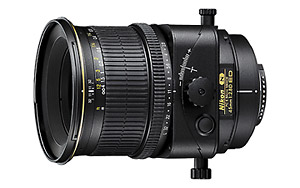 |
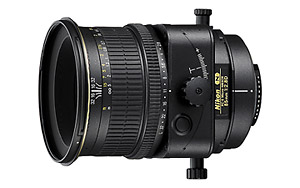 |
These lenses were already announced as being in development with the release of the 24mm PC-E several months ago. This however is the official announcement with availability and final specs.
Both lenses are PC-E Micro-Nikkors, meaning that they focus down to 1:2 magnification, and offer perspective control in the form of 11.5mm +/- of shift, and +/- 8.5 degrees of tilt. They also rotate 90 degrees left and right.
Being Nikkor-E lenses, however, they bring a new feature first found in the 24mm PC-E: an electromagnetically controlled aperture that allows for full automatic control from the D3, D300, and D700 with full aperture metering despite the lack of Nikon’s usual mechanical linkage. The PC-E lenses offer a stop down button that all compatible bodies, including older DSLRs and some film cameras, can use in lieu of the automatic full aperture metering and stop down.
The 85mm PC-E may have some roots in the existing 85mm f/2.8D PC Micro, but there have been some significant optical changes if so. The 45mm is a totally new design including an ED glass element to reduce chromatic aberrations, plus three aspherical elements. Both the 85mm and 45mm PC-E lenses feature Nikon’s Nano Crystal coat to reduce flare and ghosting.
Having used the 24mm PC-E, and owned the 85mm PC in the past, I expect great things here. These new lenses really showcase Nikon’s commitment to having a complete full-featured system for every need. I recall many cries in recent years for Nikon to bring out both full frame bodies and wider PC lenses. It looks like these people got their wish.
One caveat is that certain bodies do not permit full range of movement with some or all of the new PC-E lenses. This has to do with the viewfinder overhang not clearing the lens control knobs and body when executing certain movements, at times involving rotation. Bjørn Rørslett, a prominent nature photographer and something of a mentor to me has already used the D700 prototype and the 45mm and existing 24mm PC-E and has stated that there are no clearance issues with the D700.
The lenses are due out in August with prices of $1799.95 for the 45mm and $1739.95 for the 85mm.
What Wasn’t Announced, and the “Next Move”
There has been considerable speculation about a “D3x”, a high-resolution Nikon body featuring either the 24-megapixel 6 FPS Sony CMOS sensor announced a few months ago, but not yet implemented, or a custom Nikon design above 18MP (the two key consumers for the 24mp sensor would be Sony themselves and Nikon, in all likelihood). Some had speculated that the 24mp sensor would be in the body that became the D700, and that a new Nikon design would show up in the D3x.
The 24-megapixel Sony sensor with a Nikon implementation can promise similar or better high ISO performance compared to the D300, as the D300 sensor scaled up to FX would be over 28MP. Density would be a little higher than that of a 10mp sensor, but Nikon and Sony have never produced a 10MP CMOS, which would likely outperform their popular 10mp CCD.
The lack of a D3x in this announcement can only mean that one will not be too far behind. It was expected to be announced prior to the Olympics, where Nikon is expected to make a much stronger showing than the 2004 games. It is still quite possible that production-grade hardware with beta firmware will be in the hands of the shooters at the Olympics for the D3x, with full production D3, D300, and D700 bodies in use as well.
Also widely anticipated is the “D90,” the name used to describe the expected DX format D80 successor. The D80, which was released in 2006, is due for replacement in the next 6 months or so, possibly at Photokina later this year now that it was not announced at this stage. It most likely will feature a 12mp (or perhaps 14mp) DX sensor, may sport slightly faster continuous shooting, will continue to use SD cards, and may feature other improvements such as live view, a larger LCD, and improved autofocus. I wouldn’t rule out more changes in the extreme low end of the range as well.
Lenswise, many were hoping for an updated set of fast primes, or a mark II of the 70-200mm f/2.8G VR, which has some corner performance issues on FX. With the advent of a second and likelihood of a third FX camera in the pipeline, I would venture to say that the 70-200mm will have a great chance to see an update alongside the D3x announcement (which would look better PR-wise, seeing as it would be to match the ‘high resolution requirements’ of the D3x), and I didn’t expect more lenses than the PC-E group at this point, since they had already been effectively announced. I would hope for new fast primes at Photokina or PMA.
Nikon D700 Analysis
The D700 is clearly a very well considered move by Nikon to further expand their system’s appeal and provide new options for photographers using their gear. Given the momentum Nikon currently has in the market, it is a move that will only serve to bring more photographers into their brand and prevent that momentum from slowing down one bit. Newcomers will be attracted by the smaller body size combined with the speed, responsiveness, and build of a pro camera at a not-so-pro price.
For those Nikon shooters who have not yet bought one of the new bodies, the D700 offers a middle ground. The body size and versatility of a D300 combined with the speed, sensor size, and image quality of the D3 at a very attractive price point, about 60% of the cost of the D3 for what I’d say is 95% of the camera. Looking on a larger scale, if you see what 60% of the price of the D700 is, you end up at about $1799, the price point the D700 came out at.
For those already shooting a D300, the D700 will allow a combination DX and FX system with two of the fastest, most versatile bodies around and the best image quality available for low light shooting in the D700 for the price of a single D3, with a high degree of accessory sharing. For those shooting the D3, the D700 offers familiar territory- an ideal backup or secondary body whose capabilities very closely match the D3’s. At the same time, it offers a compact form factor, lower body weight, lower cost, but can match accessories, batteries, and almost equal speed when the grip is included. The D3 can be extremely obtrusive and bulky, and for some the D300 just isn’t a practical choice. For this very reason, I am considering the D700 as an addition to my own kit when funds are available. For those with both the D3 and D300, all the pieces and accessories would already be there, no added logistical complexity would exist with a new middle-ground body stuck in.
It is also important to look to the future. Rumored just as much as the D700, if not more, has been the high-resolution companion to the D3, thus far known by the placeholder name of “D3x” in the rumor mills, as described previously.
This is expected to come at a premium over the D3. Ideally the backup/secondary body would offer something similar but unique. Since the DX body of the D300 would no longer significantly higher pixel density, a D3 or D700 would be ideal, offering improved high ISO image quality, similar and even faster speed, and the same sensor size. A hypothetical D3x could be purchased with a D700 backup/secondary for the same cost as a pair of D3s, with the two bodies complimenting one another nicely.
Some might see the D700 as the death of the high end DX format line, but I disagree with those who say we should take this announcement as a sign of that eventuality. One only needs to look at the name. It’s not D400, or D500, or even D600. This is the D700. Nikon has left room for up to three more DX high end DSLRs in their existing naming scheme. It is possible that the transition could be after the D400, or D500, with the D500 or D600 also being FX, but the possibilities are there.
Likewise, the SB-900 seems to be targeted both to work on the new FX bodies and improve experiences with the DX line as well. Adding new creative options with the i-TTL Creative Lighting System and wireless flash made the SB-800 immensely popular. The SB-900′s new abilities to modify light, combined with improved controls, range of motion, and the optimizations for the new AF systems and FX/DX mixes are sure to make it a popular choice as well. It looks like build quality may have improved as well, so kudos to Nikon for making a good thing better.
The PC-E lenses aren’t going to float the boats of a lot of people, but they serve just as crucial a role as any lens. They may not sell in record numbers but they sell and they bring with them pros who may be migrating from another system, which in turn brings Nikon a halo effect of body, accessory, and other lens sales in the long term. This in turn helps finance new bodies and lenses, while building the attractiveness of the system. So don’t look this gift horse in the mouth. Besides, you never know when you need a PC lens!
With this announcement, Canon is really in trouble. Their momentum came to a dead halt with the 1D Mark III debacle, and the 1Ds Mark III has not been without issues of its own. The D3 has been compared favorably to the 1DsIII by respected reviewers. There are rumblings of a 5D replacement, but Canon has typically handicapped their sub-flagship models to drive sales of the higher end bodies. While the 5D replacement may have a higher MP-count, it is unlikely it will exceed the D700 in either image quality or feature set. Sony may also face challenges now that Nikon’s line is so strong, as they try and build their own professional system.
Right now I’m well into writing on our D3 Pro Review to match our D300 Pro Review, though studio tests will need to be conducted as well. I’ve asked Photo-John to look into a D700 sample to review, hopefully we’ll be able to get our hands on a body one way or another in the next few months. I’m placing my order for the SB-900 today, so I’ll review that unit when it arrives, too.
Until next time, see you on the forums!
Related Content:
Nikon Review Page
Official Nikon D700 Press Release
Nikon Digital SLR Reviews
All Nikon Reviews
Nikon Cameras Forum
All Nikon News
Nikon Web Site
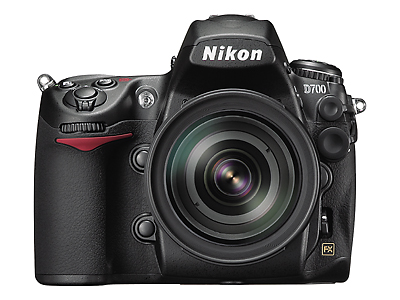
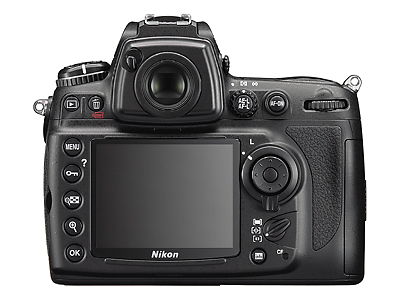
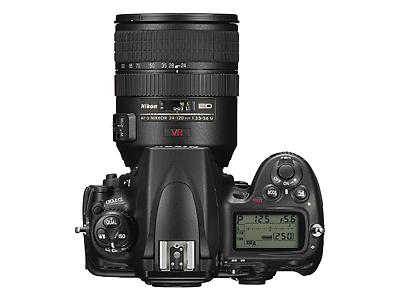
(continued… Official Nikon D700 Press Release)


This is a great, detailed article, Harrison. Thanks for busting it out for us so quickly. It’s great having someone so knowledgeable and detail-oriented on the team. You digest and process this kind of information very, very well.
The Nikon D700 announcement was a surprise to me. Nikon is pushing hard and I’m liking what they’re doing a lot. I wonder if Canon will have an answer to this? Mid-summer is not a normal introduction time for a camera like this. The DSLR competition is always interesting.
Great news! I am seriously looking to upgrade from the D80, this article is big news! Thanks.
Well done,Harrison.
Rick
I am so pleased that Nikon have brought out the D700 as it’s better priced and much more achievable. As soo as I have have enough cash I will get one. Presently I use the Fuji S3 and Fuji S5 pro’s both use Nikon lens’s. Fuji have not let any information out as yet as to what they are going to do, This is a bit daft really as they are losing on sales..
Great news and surprise to see the D700. I really enjoy my D300, and look forward to trying out the D700. Thanks for the great new article.
great article.
one difference not mentioned when i rang nikon was that the d700 wont get the weatehr proofing that the D3 and D300 get.
The D700 is indeed weather sealed at least to the same extent as the D300. Which is plenty, I might add.
I had just purchased a D-300 and as soon as I heard about the D-700 I returned the D-300. Can’t wait to get my hands on the D-700. Hope they don’t delay the projected shipping date of end of July?????
Tnx so much for the review…I think Im gonna give the D700 a try
It’s proven again that Nikon is the big ‘guy’ on the photography market. With Nikon D700 it has fill every need that a pro will need. In fact it’s not far from its’ ‘brother’ D3 not to say almost the same exept that D3 has longer ‘life’.
I had or owned diffrent nikon camera bodies but this makes me more confident when I go to take pictures even though my D300 was pretty good.
The most I like is of course the ‘FX’ full frame fromat where I can use the wide angel lenses without being croped or any other film lens without being worried of ‘DX’ format anymore.
So far the best and to be honest I dreamed for D3 but now I wouldn’t think any more that now I have the D700.
I think is the best in market.
D700 – Tthis is time for a change from my lovely D80? Big problem. rgds
I have owned the D-700 for 8 months now and can tell you it ‘s a great value.
The photos it produces are fanatasic. Buy this Camera you will not be disappointed.